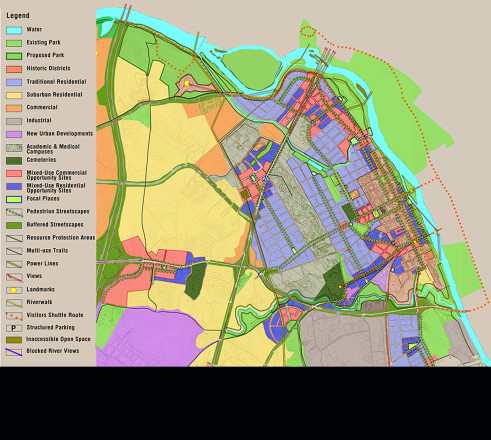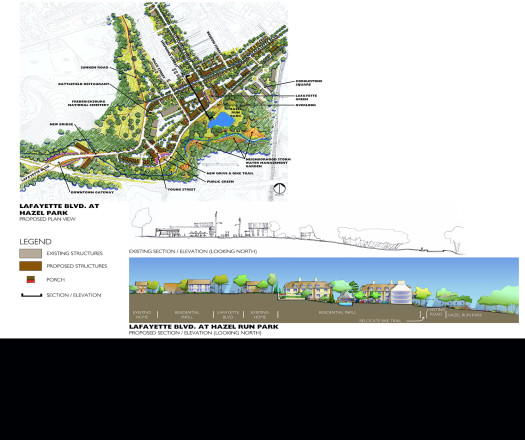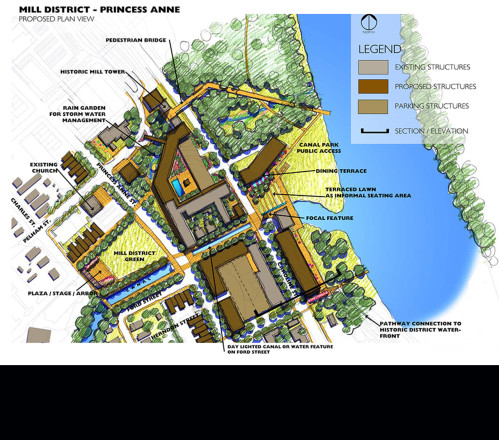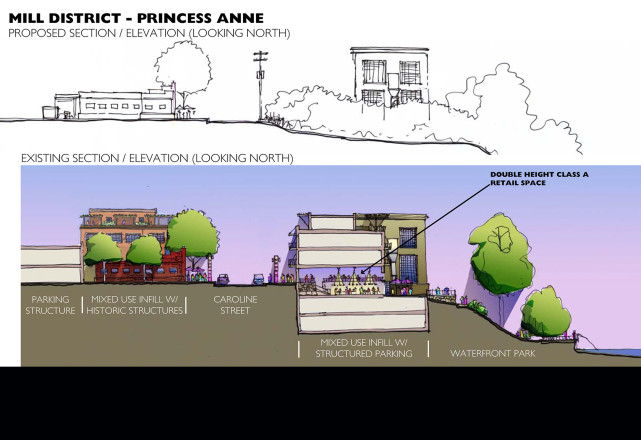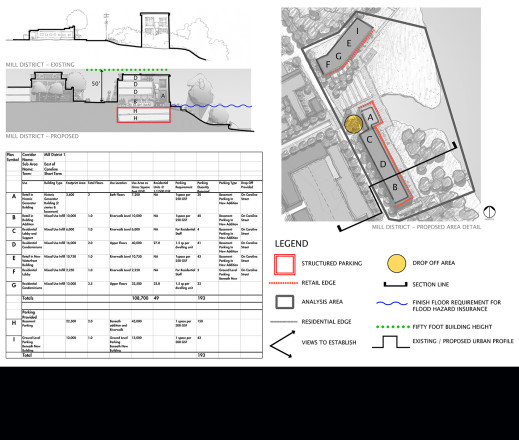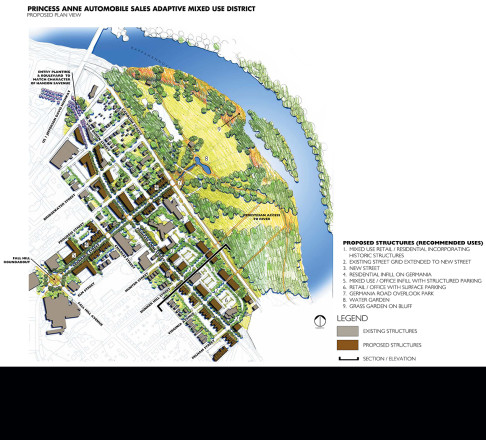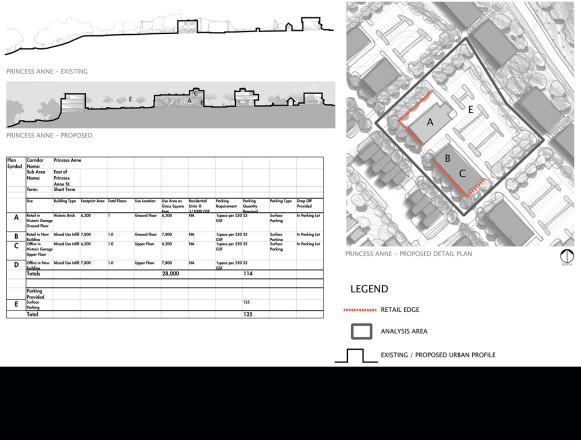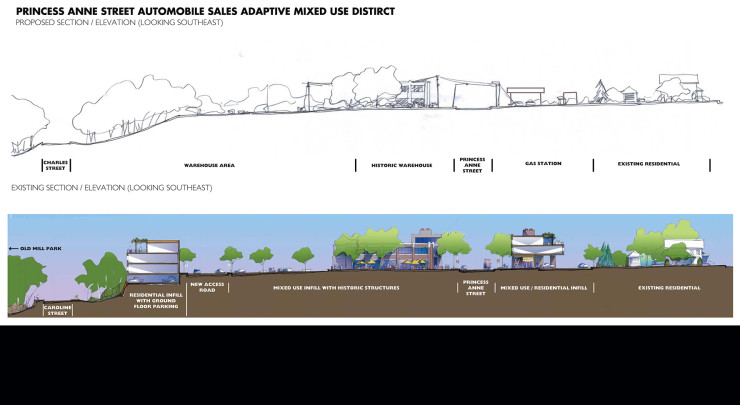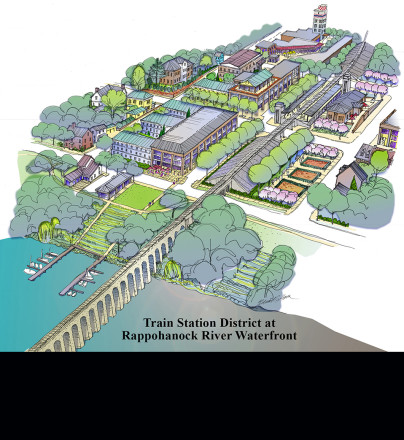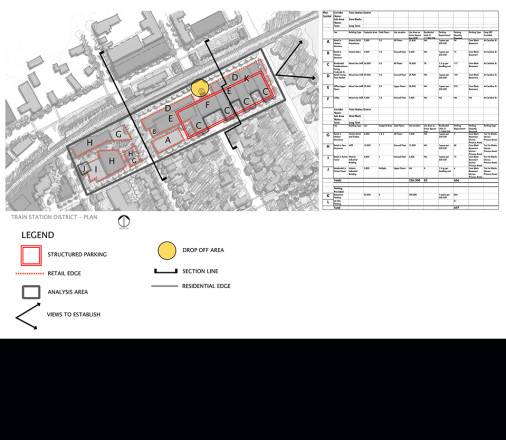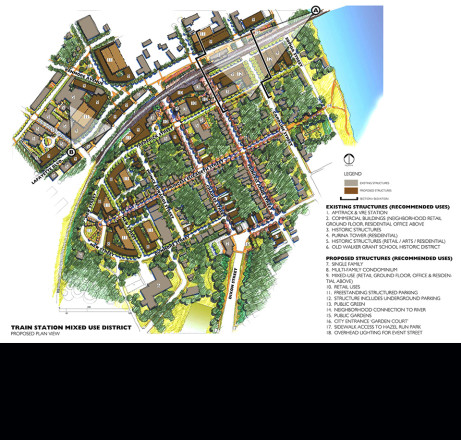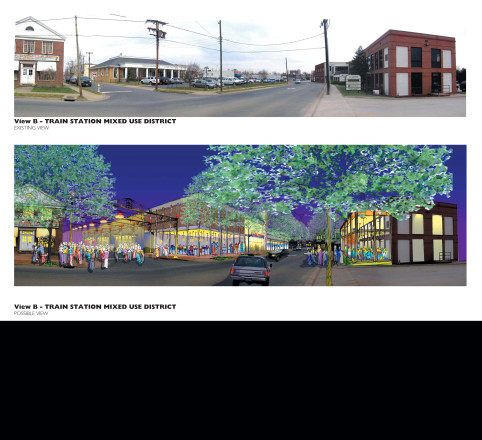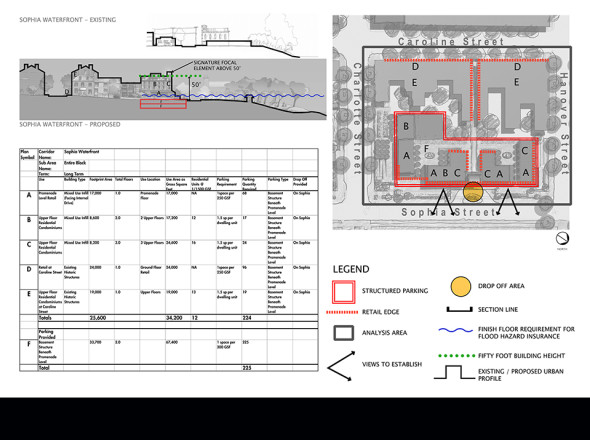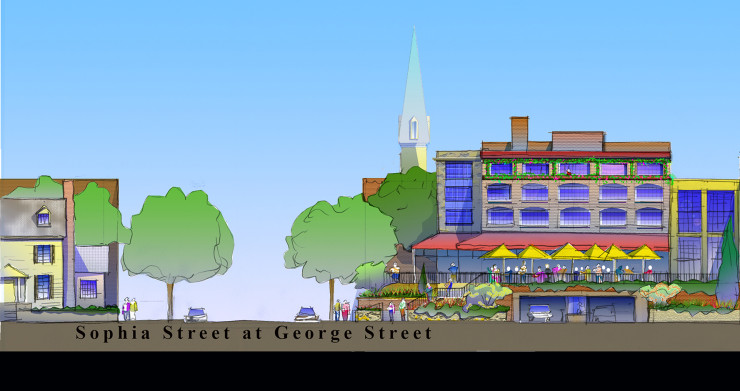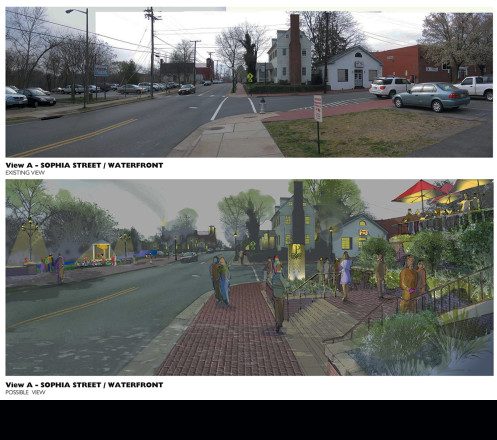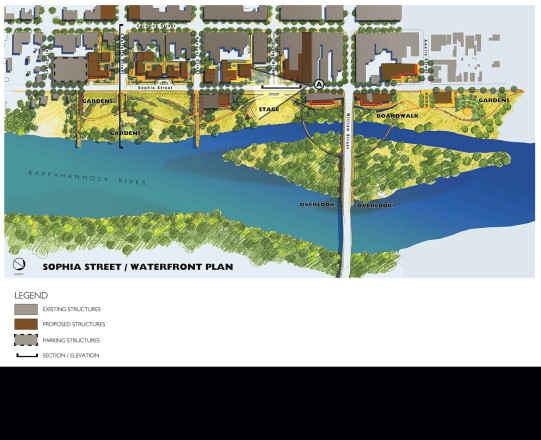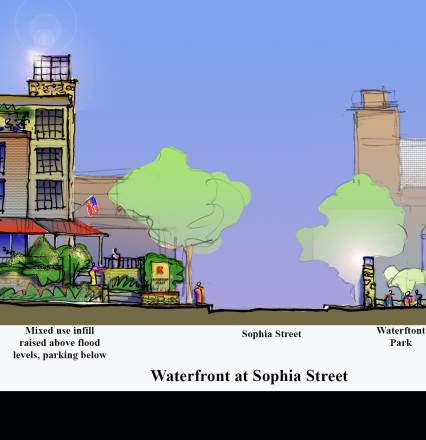Jumpstart! Fredericksburg
Jumpstart! Fredericksburg
(use scroll bar on right side of this window to read description)
LOCATION: Virginia
CLIENT: City of Fredericksburg, Virginia
“Jumpstart!” was a major urban design project for the historic river town of Fredericksburg, south of Washington, D.C. Vision plans, detailed visualizations of proposals and use assessments of twelve districts, including the Historic District and the Rappahannock River waterfront, were developed and presented to the public. The project team drew on the unique characteristics of this historic city to recommend the creation of twelve distinct neighborhoods. Over the centuries, the urban fabric of the Historic District remained relatively intact, but adjacent neighborhoods had lost character. Their original layouts had been chewed up with aging roadside commercial strips. Route One, heavily traveled before I-95 was built, passed through the city, separating neighborhoods, and still had a major gritty impact. Newer commercial malls and big box retail on the periphery along I-95 had sucked the life out of inner urban areas. Abandoned industrial buildings stood near the river, adding to the sense of neglect.
The project proposed the enhancement of several neighborhoods, where blocks of housing were previously invisible behind the commercial strips along Route One. Improved pedestrian connections and street crossings, streetscape upgrades, targeted infill development, would give these neighborhoods distinct identities. Vacant riverfront land and industrial warehouses situated beside an Amtrak-VRE rail station and directly adjacent to the city center, became a neighborhood area ripe for revitalization. Many underutilized areas were envisioned to become intimate community centers for the surrounding residential neighborhoods. The diversity of the existing architecture from the 18th, 19th and 20th centuries acts as the cue for the scale, character, and materials for proposed urban infill. This would allow the city leaders to discourage the lookalike all brick ‘federalization’ of new infill, which, over the recent decades, had diminished the sense of place of the existing historic district. ‘Federalization’ had produced missed opportunities for the other eleven neighborhoods to strengthen their own eclectic identities.
A variety of open spaces, ranging in character from neighborhood greens and squares to linear parks, were proposed to link the neighborhoods with the existing historic downtown. The proposed Rappahannock River waterfront park would give added recreational opportunity to the downtown. Hamm’s role, as an associate principal at Rhodeside and Harwell, included community interface, client coordination, urban design strategies and graphics. This study has helped initiate several significant redevelopment projects in the city. The project was done in association with Vantage Point Development Advisors, LLC.
